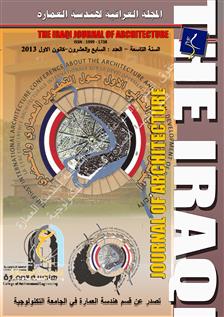Urban Integration of Historic Centers
Abstract
Historic centers are considered one of the tangible forms of civilization in terms of depicting the extensions of the past. They form one of the intensively proposed controversies in the modern field in regard to the possibility of dealing with them, the objectives of development and conserving them as they represent the merge of the old and the new. This is manifested in the merger of contradictions and the changing value resulting from urban interference in order to link the historic centers with other parts of the city through linear streets that penetrate its urban structure and divide its urban texture, causing a common problem for most Islamic Arab historic centers.
Several of philosophical, theoretical and architectural theses have concentrated on identifying the relations between the new and the old of the historic centers, such as the relation of urban integration that represents the integration of urban environmental components in regard to the social, economic and environmental function and its integration at the physical aspect. Through studying and analyzing the urban theses that deal with the factors of urban integration at the functional and physical level and the urban theses that discuss the transformation of urban structure. According to this perspective, the research problem was identified as follows: the absence of a clear vision of the urban integration factors at the visual and cognitive levels between the new (the penetrating linear streets) and the old urban fabric in the structure of historic centers through the feature of transformation in its urban structure. As for the research thesis, it is related to employing the penetrating linear street to achieve the urban integration at the visual and structural levels through the feature of transformation at the structure of the historic center as a basic condition to achieve urban integration. This research aims at:
1) Detecting the factors of urban integration between the old and the new in the urban structure of historic centers at the visual level by the integration of the urban scene and at the constructional level by the constructional integration of urban structure.
2) Identifying the mechanism of transformation to conserve the urban structure system of the historic center in a way that achieves urban integration.
For the purpose of treating the research problem and maintaining the objectives and theses of the research, a hypothetical form of urban integration for historic centers was built in a way that embraces the factors of urban integration and the methods of urban structure transformation.
The research has adopted the rules of spatial syntax in the analysis and measurement of urban integration factors, through identifying the structural characteristics of the historic
urban structure and the implementation of the transmission mechanisms of urban structure. The types of the urban structure were analyzed based on the analysis of the elected urban structure using the spatial relations (topology) of the urban structure elements (bulk and space) and analyzing the same using mathematical tools that brings the elements together to a specific level.
The results showed that the achievement of urban integration of historic centers could be completed in two stages; the first is the transmission of urban structure through the utilization of one of the transmission mechanisms and their application concepts (at the comprehensive level of the structure) and the second is the achievement of urban integration factors through structural characteristics(comprehensive and topical) of the urban structure where they used the transmission concepts in re-employing the penetrating linear streets to achieve urban integration between the linear street and the old texture. The results showed:
1) An appropriateness of two concepts of the transmission of the urban structure of historic center; which are restructuring the urban structure and the original compositional method for the pattern to achieve the urban integration at the comprehensive level through the achievement of high values to measure the clarity, centrality and directionality of the urban structure.
2) Achievement of the factors of urban integration between the old and the new through conserving deep compositionalcharacteristics(comprehensive and topical) of the original urban structure for Islamic Arab historic centers that were tested to measure these properties. During the process of finding a solution for the research problem, a solution for the general problem can be achieved; which is a penetrating linear street that forms the center of the structure of the historic center. It should be reused and approximated to the old main commercial axes in regard to its compositional relations to the old urban structure.
Downloads
You are free to use the work, but you have to attribute (refer to) the work in the manner specified by the author or licensor (but not in any way that suggests that they endorse you or your use of the work).
IRAQI J. ARCHIT & PLANN grants you the right to publish the metadata of the journal, it's issues and articles under the terms of the Creative Commons Attribution-ShareAlike 4.0 International License.
Author(s) hold the copyright of their aricles without restrictions. However, IRAQI J. ARCHIT & PLANN holds publishing rights for articles and their revisions once the article is published.
Authors can archive pre-prints (ie pre-refereeing) and post-prints (i.e. final draft post-refereeing) versions of the work they submitted to IRAQI J. ARCHIT & PLANN using non-for-profit open-access servers whether on author's personal website and/or institutional repositories including the university or research center where the author work.. For post-prints, only the IRAQI J. ARCHIT & PLANN’s as-published PDF version is permitted and the published source (IRAQI J. ARCHIT & PLANN’s website) must be clearly acknowledged within the archiving webpage.






